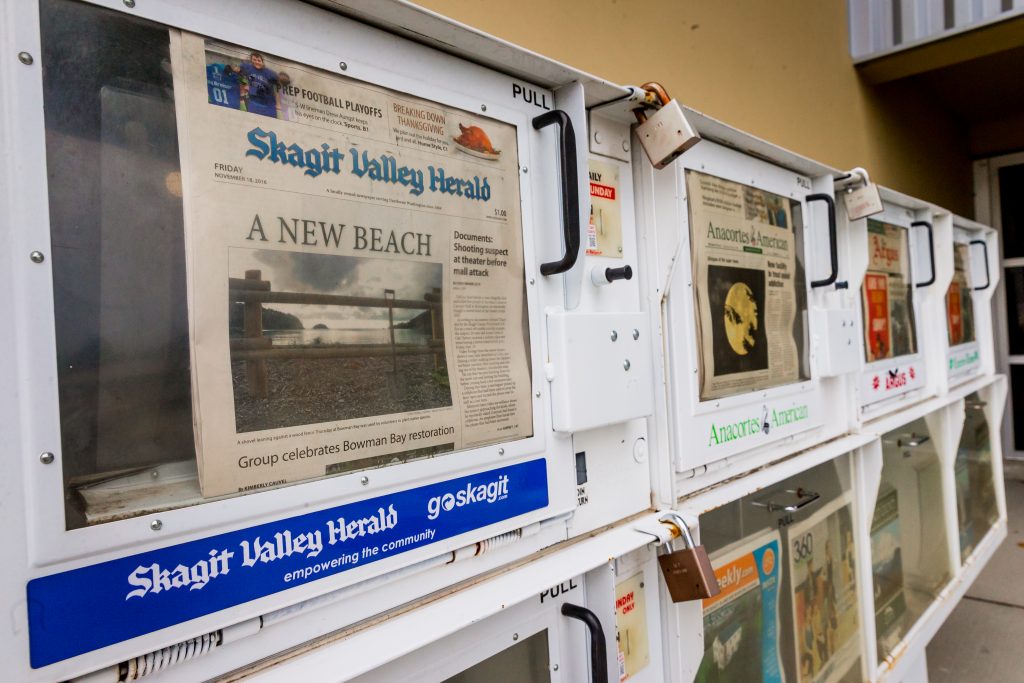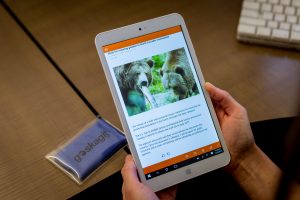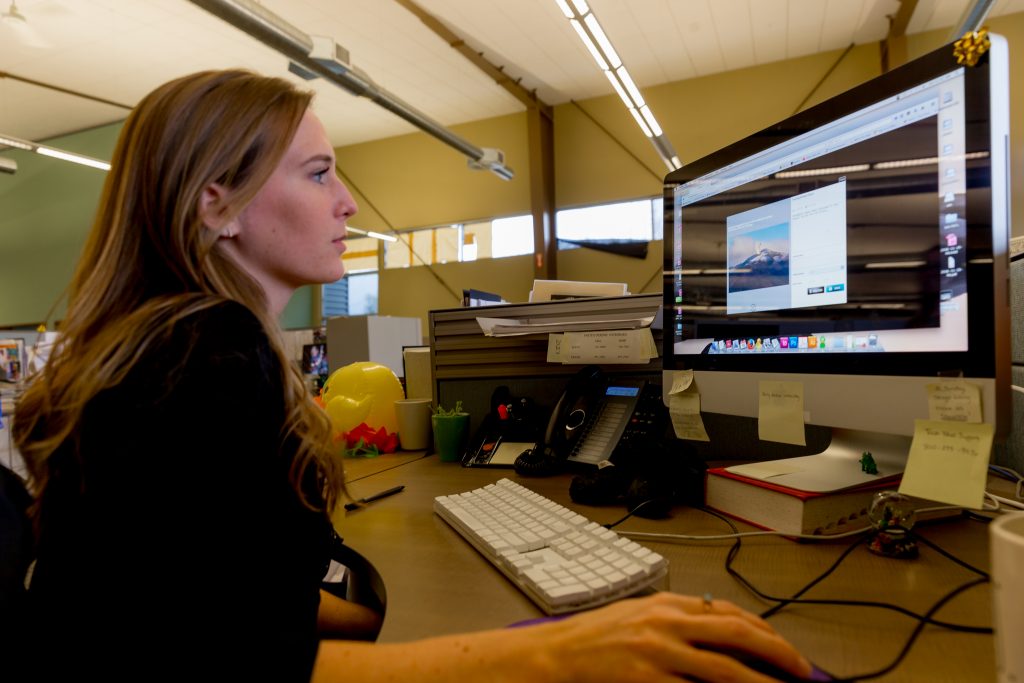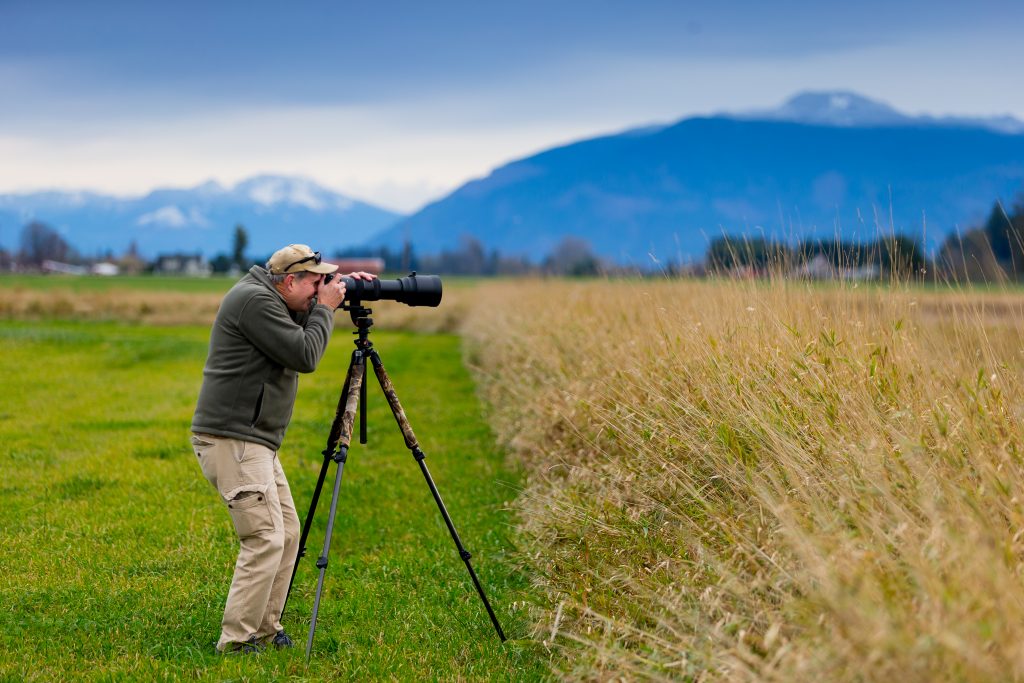Plucky news group Pioneer lives up to its name with an exploratory citizen-journalism app and tablet
A small but adventurous newspaper chain in the Pacific Northwest just may have come up with an innovative way to use technology to revamp not only its own existence but that of the entire industry – one snow-geese photo or discounted espresso at a time.
Seattle-based Pioneer News Group, which owns 23 daily and weekly newspapers in Washington, Oregon, Idaho, Montana and Utah, has begun selling Windows 10 tablets along with subscriptions. They’re preloaded with the uReport app – available for any smartphone as well – that lets subscribers not only read the news but report it too. And soon local businesses will be able to create their own apps and advertise directly to those subscribers.

It’s an ambitious approach that has the goal of creating a new ecosystem to challenge global social-media sites through a hyper-local online community of residents and businesses, with the newspaper at its center. News organizations are seeking ways to stay relevant in the rapidly changing digital era, as lost subscriptions and ad revenues have forced most to slash staff and print thinner papers or even move to online-only versions. About 25 other media outlets have expressed interest in Pioneer’s venture, and a few national newspaper chains have already started their own pilot programs.
“People still look to the newspaper for information, and it’s still valued,” says Pioneer Chief Operating Officer Eric Johnston, who has been involved in journalism since he became a reporter in eighth grade for his school newsletter, published with an IBM Selectric typewriter. “If we can keep readers engaged, that’s part of the battle of keeping the newspaper a vibrant piece of the community, whether it’s in print or not.”
Three years ago, Pioneer’s owners and leaders identified innovation as a goal that would be key to maintaining the health of the company. Employees were encouraged to submit ideas for moving Pioneer forward. Suggestions ranged from providing subscribers with free carwashes to creating apps for garage sales. One proposed offering tablets to subscribers, since about 60 percent of traffic on Pioneer’s websites comes from mobile users.
Johnston and some colleagues were playing golf one day in the spring of 2014 when they met a few Microsoft executives on the course and struck up a conversation over dinner. Those new friends helped connect Pioneer to a company that could provide Windows-based tablets for under $100 each. But Pioneer didn’t want to just give out the devices as a gimmick; it wanted them to inspire more involvement by subscribers.
So Microsoft connected the company with Posh Technologies, which had already worked on a community journalism app with the Times of India newspaper. And that’s how Pioneer’s uReport was born.

The app comes pre-loaded on the 8-inch Windows 10 tablets that readers can get by signing up for a one-year subscription. It costs $15 a month to get the tablet along with the Sunday newspaper delivered to their home, for example, and then the device is theirs. Those who don’t want a printed version of the paper can get the news solely via the app. And subscribers who don’t want a tablet can download the app onto any Windows, Android or iOS devices they already have, with the same functionality.
In the first few weeks, readers of the Skagit Valley Herald in Mount Vernon, Washington – the first Pioneer paper to offer the system – bought a few dozen tablets and downloaded the app on several hundred devices, even before full marketing efforts had kicked in. Johnston’s eventual goal is to have 10 percent of the subscriber base across the company’s newspapers – or about 6,500 people – sign up for a tablet subscription.
“We needed to figure out, in this world where everything is on a global, national or city level, how do we get it down to a local scale like Mount Vernon?” says Peter Wengert, Microsoft’s West region solutions director, who was introduced to Johnston by mutual golf friends and began championing Pioneer’s project.
Microsoft provided the project with the Universal Windows Platform for the apps and tablets, and the Azure cloud service is aggregating all the content that’s submitted. That way, Pioneer doesn’t have to invest in servers – or technicians to maintain them. Whether one person submits a photo of fall leaves one day or a thousand upload photos of a political march the next, the pay-as-you-go cloud platform scales accordingly, Wengert says.
So far, Pioneer is offering the apps in three of its markets, and it’s selling tablets in two. Initially, direct ads have targeted former subscribers – folks who canceled in recent years because they didn’t have time to read and the papers kept stacking up. Pioneer will assess progress in early 2017 and decide whether to scale up or pivot, Johnston says.
“It ups the game of the newspaper in the community, because it’s very different and exciting,” Johnston says. “Our staff is really starting to love selling it.”
If we can keep readers engaged, that’s part of the battle of keeping the newspaper a vibrant piece of the community, whether it’s in print or not.
Lou Erwin is one of those targets. She had subscribed to the Skagit Valley Herald off and on after moving to the area from Oregon six years ago, but sometimes the paper would be delivered to the end of her driveway on rainy days, making it too wet to read, so she canceled her subscription – again – last year.
Erwin has a desktop and a laptop but no smartphone, so she was excited when she got a flier about the affordable tablet. It fits in her purse, and she downloaded other apps to be able to play games and read not only the newspaper, but also her email or a book.
“Since it’s electronic, I don’t have to throw the paper away, and the app still shows me articles from yesterday or the day before if I forget to read it sometimes,” Erwin says. She’s hoping the Skagit Valley Herald will add comics, advice columns, ads and coupons to round out the experience.
Chuck Mell already had a smartphone and didn’t need the tablet, but he was intrigued when he read about the app in the paper, and downloaded it immediately. A retired systems administrator, Mell’s hobbies now include taking pictures of family, nature and wildlife, so his first submission to the Skagit Valley Herald was a photo of his granddaughter playing in the fall leaves.

Pioneer hopes users will submit photos, videos and short stories for not only breaking news – things like traffic accidents or house fires – but also for charitable events and high school football games, or even holiday cheer around their communities. For more serious situations, such as a recent shooting at a mall in the Skagit Valley Herald’s circulation area, Johnston hopes readers’ submissions will provide tips for reporters to investigate. It’s meant to supplement, not replace, the work by journalists and photographers, while fostering community engagement at the same time, says Marianne Graff, the Skagit Valley Herald’s social media editor.
“It’s not very often that I’m at the scene of breaking news, but I like to give unique perspectives on local points of interest,” Mell says. “This app is so convenient that I wouldn’t have a problem with spontaneously submitting something, and if the Skagit Valley Herald wants to use it, they’re more than happy to, and if not, it’s no big deal to me because it was so easy. It just opens up a whole new, interesting avenue of sharing.”

Bobcats have wandered through Mell’s yard in years past, and he took pictures of them but didn’t have a way to show neighbors. Now, he’s looking forward to sharing unusual sightings like those with the newspaper community. His most recent submissions were photos of snow geese and trumpeter swans, letting the community know the migratory birds, thousands of which come from as far away as Alaska and Russia, were back in the valley for the winter.
“We want people to share whatever news they feel is valuable and important,” Pioneer’s Johnston says.
All submissions go into a central dashboard hosted on the Microsoft Azure cloud, where editors review them and decide whether to publish something immediately on the app, extract it into the content management system for use on the website or even in the paper itself, or reject it if it doesn’t meet standards. Geographic stamps on photos are a first line of defense to ensure accuracy for submissions, and citizen journalists’ correct names and telephone numbers are required for follow-up questions.

Pioneer is trying to be proactive and leapfrog current developments, Johnston says. “So we’re not just building an app, but we’re giving readers the content, the interface and a device, and we’re looking at blanketing the community with WiFi as well, to close the circle. This tablet project won’t be the be-all, end-all 25 years out, but hopefully it moves us further down the field toward getting more engagement as the audience rapidly changes around us.”
Pioneer News Group is aptly named. It recently partnered with the nonprofit American Press Institute to create a trailblazing system that helps quickly identify what readers are paying attention to, so editors and reporters can tailor their coverage accordingly. There are now about 55 participating news organizations, including large metro papers. Johnston says Pioneer’s newspapers are seeing increased readership as a result of those efforts.
Pioneer is “relatively small, but they’re innovative,” says Rick Edmonds, a media business analyst with The Poynter Institute, a nonprofit training organization for journalists that’s based in Florida. Newspaper advertising revenue dropped another 10 percent this year on average, he says, only adding to the industry’s crisis over the past two decades.
“The smart ones have figured out that even when money is tight, they’d better be investing in digital and placing some bets on experimental products,” Edmonds says. “It’s not inevitable that the newspaper problem won’t be solved. There’s a window of time – that’s not forever – to turn things around.”
Local newspapers have traditionally been largely funded by local advertisers, and the internet has been hard on both. So the third prong of Pioneer’s project is aimed at helping to drive business to those smaller, independent companies.

Appinteract, also developed by Posh, allows small- to medium-sized businesses to create freestanding apps through a web-based, templated system that automatically publishes to the Windows and Apple stores, for just $50 a month. A Pioneer newspaper can then tie its app to that of a locally owned coffee shop, for example, to provide subscribers with deals like 50 cents off a latte.
“It follows closely with the model traditional print newspapers have had for decades, where you provide people with quality content, in a format they like, you place advertising messaging around it and you allow the access between the consumer and the business,” Johnston says. “The difference here is that it’s more dynamic, direct and immediate. You have an instant connection, unlike with a paper where you’d have to clip a coupon.”
The ad system hasn’t rolled out yet but is on its way, Johnston says.
“Using our platforms, newspapers can create an ecosystem that is local, and they can hold the flock together rather than losing readers and advertisers to Facebook,” says Vishal Misri, the chief executive officer and founder of Posh Technologies. “This could help the small guys, in a cost-effective way, to own their audience and not be eaten up by the big guys.”
Top photo: Chuck Mell takes pictures of migratory birds in the Skagit Valley, some of which he will submit to the Skagit Valley Herald through the uReport app. (Photo by Scott Eklund/Red Box Pictures)








